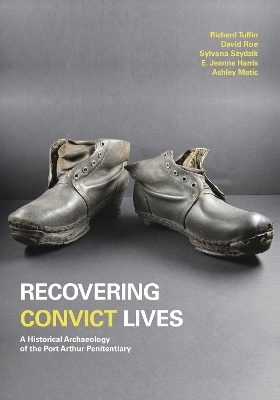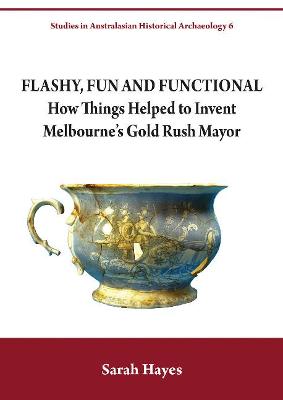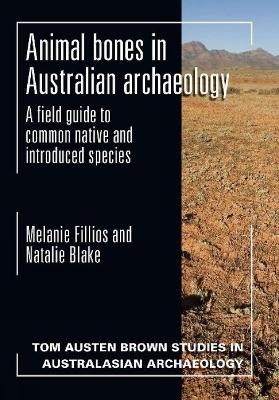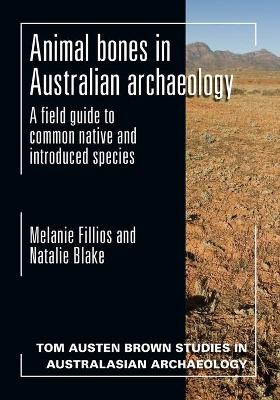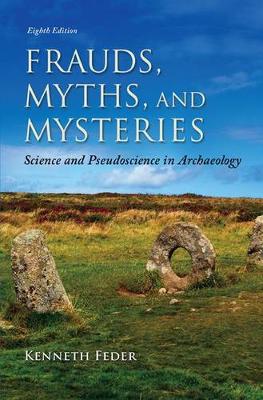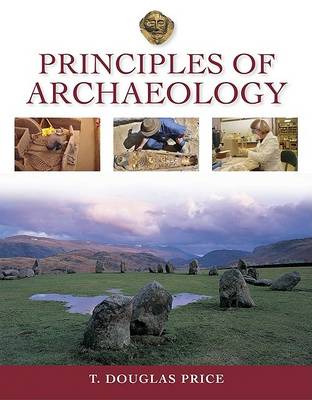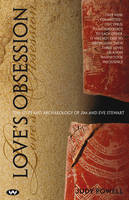Principles of Archaeology
Principles of Archaeology
Price, T. Douglas
McGraw-Hill Education - Europe
06/2006
608
Dura
Inglês
9780073271323
1224
Descrição não disponível.
Part I. Introduction Chapter 1. An Introduction to Archaeology Introduction: What Is Archaeology? Archaeology Is... Archaeology Is Not ... Example: The Piltdown Man Example: Erich von Daniken Evaluating Science and and Pseudoscience The Scientific Method Evolution Evolution and Creationism Why Study Archaeology? Careers in Archaeology Survey Says ... A Day in the Life ... University Professor: Tina Thurston State Archaeologist: Maureen Kavanagh Museum Curator: Anne Underhill Conclusions Chapter 2. Doing Archaeology Introduction: The Lords of the Moche Peru and the Moche Discovery Excavation Analysis Science in Archaeology: The Center for Materials Research in Archaeology & Ethnology Interpretation Protecting the Past: Tourism and a New Museum in Lambayeque Conclusions Chapter 3. A Brief History of Archaeology Introduction: The History of Prehistory Pre-1900 Example: Jefferson at Rivanna River 1900-1950 Example: Woolley at Ur Protecting the Past: The Ancient City of Ur 1950 - 2000 Example: FAI 270 Archaeological Thinking: House Size and Population Today: The Future of the Past Conclusions Part II. Discovery Chapter 4. Archaeological Questions Introduction: The Subject Matter of Archaeology What Do Archaeologists Want to Know? Environment Demography Example: The Black Earth Site Technology Economy Example: Jomon Japan Organization Ideology Archaeological Thinking: Ritual in Ancient Oaxaca Ethonography Example: Settlement Population and Floor Area Ethnoarchaeology Example: Harrapan Beads Experimental Archaeology Conclusions Chapter 5. The Archaeologoical Record Introduction: Information from the Past Scale Context Archaeological Thinking: The First Americans The Nature of Evidence Attributes Artifacts Ecofacts Features and Activity Areas Example: The Tomb of Qin Shihuang Assemblages and Components Sites Example: South African Rock Art Science in Archaeology: Dating the Paintings Regions and Landscapes Example: A Landscape of Mounds Spatial Archaeology Within Site Spatial Analysis: Activity Areas and Features Example: Activity Areas at Teotihuacan, Mexico Protecting the Past: The City of the Gods Within Site Spatial Analysis: Houses and Households Example: Household Archaeology at Agayadan Village, Alaska Site Analysis Regional Spatial Analysis Site Formation Preservation Example: Windover Pond, Florida Example: The Iceman Protecting the Past: Otzi's New Home Conclusions Chapter 6. Fieldwork Introduction: Finding the Past The Discovery of Archaeological Sites Archaeological Survey Archaeological Thinking: Reese River Valley Archaeological Excavation Selecting Sites for Excavation Test Pits Vertical Excavation Horizontal or Area Excavations Screening and Flotation Example: Great Hall at Lejre Underwater Archaeology The Tools of Fieldwork Maps and Grids Contour Maps The Total Station Science in Archaeology: Global Positioning Systems (GPS) Geographic Information Systems (GIS) Soil Sampling Remote Sensing Remote Sensing from Above Example: Chaco Roads Remote Sensing On the Ground Science in Archaeology: Georadar at Petra In the Field The Project Director The Field Crew The Field Experience Example: Life in the Field Fieldwork Opportunities Equipment Conclusions Project: Discovering Sites Part IV. Interpretation Chapter 16. Explanation in Archaeology Introduction: Interpreting the Poast Schools of Thought Processual Archaeology Example: A Crossroads Of Barrows Archaeological Thinking: Mounds in Denmark Example: The Collapse Of Maya Civilization Archaeological Thinking: The End of the Maya Post-Processual Archaeology Example: The Rock Art Of Namforsen, Sweden Archaeological Thinking: Text on Stone Evolution and Archaeology Selectionist Archaeology Example: Horses and Snowmobiles Archaeological Thinking: Pots as Tools Evolutionary Ecology Example: The Emeryville Shellmound, California Archaeological Thinking: Optimal Species Gender Archaeology Example: Aztec Women and State Economy Archaeological Thinking: Gender and Government in Ancient Mexico New Directions Conclusions Chapter 17. Responsibilities Introduction: Archaeology Today The Relevance of Archaeology Example: Raised Fields of Tiwanaku The Past Is Heritage Example: UNESCO World Heritage Protecting the Past: Abu Simbel Example: The Archaeological Conservancy Who Owns the Past? Example: Kennewick Man Ethics in Archaeology Example: Donnan and Sipan Example: The Ypres Battlefield Teaching Archaeology Example: Interest Groups in the Classroom The Responsible Archaeologist Conclusions Project: Ethical Questions Appendix 1: A Brief History of the Poast Introduction: World Prehistory Geological and Archaeological Time Africa, Asia, and Europe Deep Roots in Africa Out of Africa Neanderthal The Creative Explosion The Origins of Agriculture States and Empires The Americas The First Americans Farming Villages States and Empires The Pacific Historical Archaeology Conclusions Appendix 2: Common Measurement Conversions and Equivalents Credits Bibliography Index
Este título pertence ao(s) assunto(s) indicados(s). Para ver outros títulos clique no assunto desejado.
Part I. Introduction Chapter 1. An Introduction to Archaeology Introduction: What Is Archaeology? Archaeology Is... Archaeology Is Not ... Example: The Piltdown Man Example: Erich von Daniken Evaluating Science and and Pseudoscience The Scientific Method Evolution Evolution and Creationism Why Study Archaeology? Careers in Archaeology Survey Says ... A Day in the Life ... University Professor: Tina Thurston State Archaeologist: Maureen Kavanagh Museum Curator: Anne Underhill Conclusions Chapter 2. Doing Archaeology Introduction: The Lords of the Moche Peru and the Moche Discovery Excavation Analysis Science in Archaeology: The Center for Materials Research in Archaeology & Ethnology Interpretation Protecting the Past: Tourism and a New Museum in Lambayeque Conclusions Chapter 3. A Brief History of Archaeology Introduction: The History of Prehistory Pre-1900 Example: Jefferson at Rivanna River 1900-1950 Example: Woolley at Ur Protecting the Past: The Ancient City of Ur 1950 - 2000 Example: FAI 270 Archaeological Thinking: House Size and Population Today: The Future of the Past Conclusions Part II. Discovery Chapter 4. Archaeological Questions Introduction: The Subject Matter of Archaeology What Do Archaeologists Want to Know? Environment Demography Example: The Black Earth Site Technology Economy Example: Jomon Japan Organization Ideology Archaeological Thinking: Ritual in Ancient Oaxaca Ethonography Example: Settlement Population and Floor Area Ethnoarchaeology Example: Harrapan Beads Experimental Archaeology Conclusions Chapter 5. The Archaeologoical Record Introduction: Information from the Past Scale Context Archaeological Thinking: The First Americans The Nature of Evidence Attributes Artifacts Ecofacts Features and Activity Areas Example: The Tomb of Qin Shihuang Assemblages and Components Sites Example: South African Rock Art Science in Archaeology: Dating the Paintings Regions and Landscapes Example: A Landscape of Mounds Spatial Archaeology Within Site Spatial Analysis: Activity Areas and Features Example: Activity Areas at Teotihuacan, Mexico Protecting the Past: The City of the Gods Within Site Spatial Analysis: Houses and Households Example: Household Archaeology at Agayadan Village, Alaska Site Analysis Regional Spatial Analysis Site Formation Preservation Example: Windover Pond, Florida Example: The Iceman Protecting the Past: Otzi's New Home Conclusions Chapter 6. Fieldwork Introduction: Finding the Past The Discovery of Archaeological Sites Archaeological Survey Archaeological Thinking: Reese River Valley Archaeological Excavation Selecting Sites for Excavation Test Pits Vertical Excavation Horizontal or Area Excavations Screening and Flotation Example: Great Hall at Lejre Underwater Archaeology The Tools of Fieldwork Maps and Grids Contour Maps The Total Station Science in Archaeology: Global Positioning Systems (GPS) Geographic Information Systems (GIS) Soil Sampling Remote Sensing Remote Sensing from Above Example: Chaco Roads Remote Sensing On the Ground Science in Archaeology: Georadar at Petra In the Field The Project Director The Field Crew The Field Experience Example: Life in the Field Fieldwork Opportunities Equipment Conclusions Project: Discovering Sites Part IV. Interpretation Chapter 16. Explanation in Archaeology Introduction: Interpreting the Poast Schools of Thought Processual Archaeology Example: A Crossroads Of Barrows Archaeological Thinking: Mounds in Denmark Example: The Collapse Of Maya Civilization Archaeological Thinking: The End of the Maya Post-Processual Archaeology Example: The Rock Art Of Namforsen, Sweden Archaeological Thinking: Text on Stone Evolution and Archaeology Selectionist Archaeology Example: Horses and Snowmobiles Archaeological Thinking: Pots as Tools Evolutionary Ecology Example: The Emeryville Shellmound, California Archaeological Thinking: Optimal Species Gender Archaeology Example: Aztec Women and State Economy Archaeological Thinking: Gender and Government in Ancient Mexico New Directions Conclusions Chapter 17. Responsibilities Introduction: Archaeology Today The Relevance of Archaeology Example: Raised Fields of Tiwanaku The Past Is Heritage Example: UNESCO World Heritage Protecting the Past: Abu Simbel Example: The Archaeological Conservancy Who Owns the Past? Example: Kennewick Man Ethics in Archaeology Example: Donnan and Sipan Example: The Ypres Battlefield Teaching Archaeology Example: Interest Groups in the Classroom The Responsible Archaeologist Conclusions Project: Ethical Questions Appendix 1: A Brief History of the Poast Introduction: World Prehistory Geological and Archaeological Time Africa, Asia, and Europe Deep Roots in Africa Out of Africa Neanderthal The Creative Explosion The Origins of Agriculture States and Empires The Americas The First Americans Farming Villages States and Empires The Pacific Historical Archaeology Conclusions Appendix 2: Common Measurement Conversions and Equivalents Credits Bibliography Index
Este título pertence ao(s) assunto(s) indicados(s). Para ver outros títulos clique no assunto desejado.


